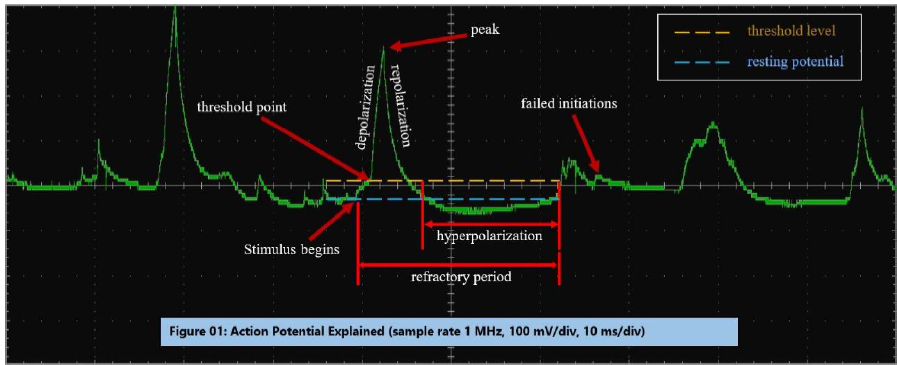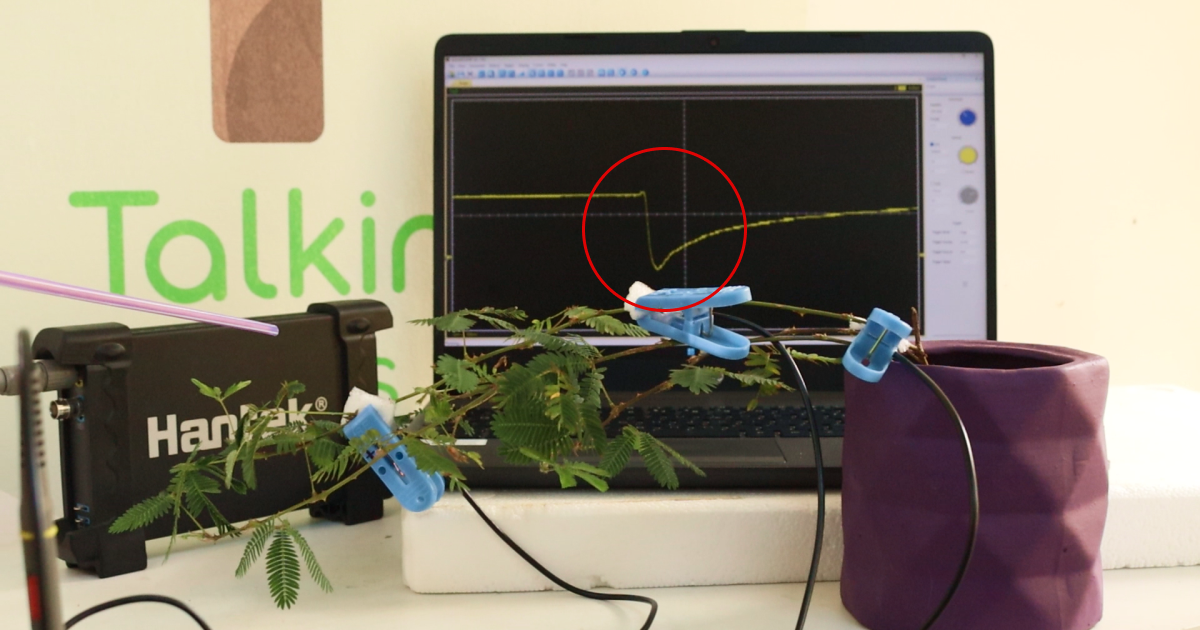The following research conducted by the Talking Tree team focuses on investigating the phenomenon of intra-plant communication within the “Touch Me Not Plant” (Mimosa pudica). The study involves the analysis of electrical potential signals transmitted through the plant to
discern the method of communication. The specific choice of Mimosa pudica stems is due to its distinctive visual response to external stimuli, wherein the plant’s leaves exhibit folding upon interaction.
Additionally, when the stimuli are sufficiently intense, both leaves and branches display folding behavior’s. This observable reaction in the plant can be interpreted as a form of signaling, potentially indicating an imminent threat within the plant’s environment.
To conduct interactions without causing harm or altering the plant’s orientation, the research team employs static-neutral, non-metallic, and non-conductive tools to delicately touch either a leaf or a branch. The investigation delves into the physiological activities within the membrane cells, which constitute the plant’s cellular walls. These cells contain sodium and potassium channels that function as gates, regulated by varying voltage levels. Under resting conditions, wherein no external stimulus is applied, there exists a relatively higher concentration of sodium ions outside the membrane cell and an increased presence of potassium ions within. This equilibrium is maintained by the operation of a mechanism known as the “Sodium-Potassium Pump.”
The electrical potential signals captured during these interactions are referred to as Action Potential electric potential signals. These signals exhibit eight distinct phases, which can be delineated and observed through advanced equipment interfaced directly with the plant. Resting Potential: Characterized by the absence of stimuli, this phase represents the electric potential when the plant experiences no external influence. At this stage, the interior of the cell maintains a negative charge while the exterior possesses a slightly positive charge, leading to cellular polarization. For comparison, the resting potential of a neuron in humans typically hovers around -70 mV.
Rising Phase: Upon receiving a stimulus, the sodium channels open, permitting the influx of external sodium ions (Na+) into the cell. Consequently, the electric potential within the cell becomes progressively positive and continues to ascend. Simultaneously, potassium channels begin to open, albeit at a slower rate. Peak: This phase marks the culmination of the internal electric potential, primarily due to the influx of sodium ions (Na+). The maximum value is regulated by the sodium-potassium pump. At its peak, potassium channels are fully opened.
Falling Phase: Following the deactivation of sodium gates, potassium gates remain open, facilitating the efflux of internal potassium ions. Consequently, the positive electric potential again decreases.
Undershoot: As potassium channels slowly close, residual ions continue to pass through, generating a slight negative electric potential even after returning to the resting state. The sodium-potassium pump restores equilibrium by balancing sodium and potassium ions until the resting potential is reached.
Threshold: Not every stimulus generates an action potential. A threshold voltage value is required to trigger an action potential, which, for human neurons, is approximately -55 mV. Stimuli surpassing this threshold provoke an action potential in the plant.
Refractory Period: The interval between two resting potential values of an action potential constitutes the refractory period. Within this timeframe, cells (or neurons in human biology) are not receptive to additional incoming stimuli.
Failed Initiations: Stimuli that fail to reach the threshold cannot generate an action potential. Consequently, despite an increase in electric potential, the system returns to resting potential as the stimulus is insufficient to trigger an action potential.





